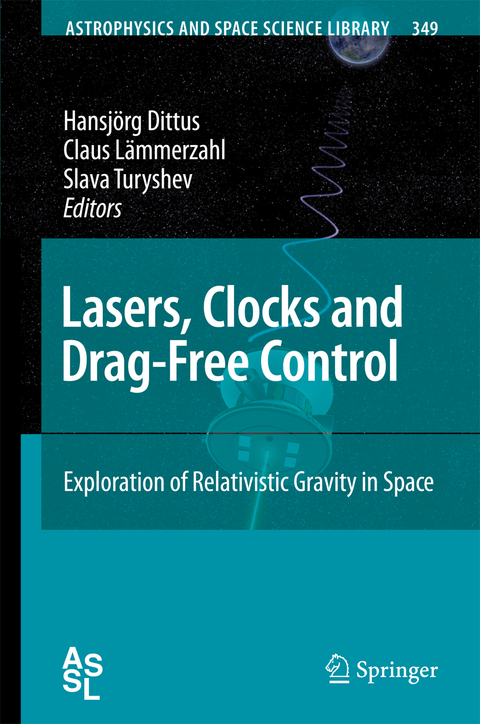
Lasers, Clocks and Drag-Free Control
Springer Berlin (Verlag)
978-3-642-07073-0 (ISBN)
Over the next decade the gravitational physics community will benefit from dramatic improvements in many technologies critical to testing gravity. Highly accurate deep space navigation, interplanetary laser communication, interferometry and metrology, high precision frequency standards, precise pointing and attitude control, together with drag-free technologies, will revolutionize the field of experimental gravitational physics. The centennial of the general theory of relativity in 2015 will motivate a significant number of experiments designed to test this theory with unprecedented accuracy.
The purpose of the contributions in this book, written by international experts, is to explore the possibilities for the next 20 years for conducting gravitational experiments in space that would utilize both entirely new and highly improved existing capabilities.
The Editors are leading personalities in the field.
Surveys.- Fundamental Physics, Space, Missions and Technologies.- General Theory of Relativity: Will It Survive the Next Decade?.- Is the Physics Within the Solar System Really Understood?.- Theory.- Propagation of Light in the Gravitational Field of Binary Systems to Quadratic Order in Newton's Gravitational Constant.- On the Radar Method in General-Relativistic Spacetimes.- A Universal Tool for Determining the Time Delay and the Frequency Shift of Light: Synge's World function.- Unified Formula for Comparison of Clock Rates and Its Applications.- Gravity Tests and the Pioneer Anomaly.- Laser Ranging Delay in the Bimetric Theory of Gravity.- Technologies.- Measurement of the Shapiro Time Delay Between Drag-Free Spacecraft.- Laser Transponders for High-Accuracy Interplanetary Laser Ranging and Time Transfer.- Unequal-Arm Interferometry and Ranging in Space.- Technology for Precision Gravity Measurements.- Clocks and Accelerometers for Space Tests of Fundamental Physics.- Atom Interferometric Inertial Sensors for Space Applications.- Drag-Free Satellite Control.- Drag-Free Control Design with Cubic Test Masses.- Solar Sail Propulsion: An Enabling Technology for Fundamental Physics Missions.- Missions and Projects.- Testing Relativity with Space Astrometry Missions.- LISA, the Laser Interferometer Space Antenna, Requires the Ultimate in Lasers, Clocks, and Drag-Free Control.- Lunar Laser Ranging Contributions to Relativity and Geodesy.- Science, Technology, and Mission Design for the Laser Astrometric Test of Relativity.- LATOR's Measured Science Parameters and Mission Configuration.- OPTIS: High-Precision Tests of Special and General Relativity in Space.- Testing Relativistic Gravity to One Part per Billion.- Exploring the Pioneer Anomaly: Concept Considerations for a Deep-Space Gravity Probe Based on Laser-Controlled Free-Flying Reference Masses.- Pioneer Anomaly: What Can We Learn from LISA?.
| Erscheint lt. Verlag | 25.11.2010 |
|---|---|
| Reihe/Serie | Astrophysics and Space Science Library |
| Zusatzinfo | XX, 642 p. 179 illus., 3 illus. in color. |
| Verlagsort | Berlin |
| Sprache | englisch |
| Maße | 155 x 235 mm |
| Gewicht | 988 g |
| Themenwelt | Naturwissenschaften ► Physik / Astronomie ► Astronomie / Astrophysik |
| Naturwissenschaften ► Physik / Astronomie ► Theoretische Physik | |
| Schlagworte | Atom • Drag-Free • EFE • Experiment • Experimental Relativity • General relativity • general theory of relativity • Gravitational constant • Gravity • Pioneer Anomaly • Relativity • Shapiro Delay • Space Interferometers • Star • Test of Relativity |
| ISBN-10 | 3-642-07073-6 / 3642070736 |
| ISBN-13 | 978-3-642-07073-0 / 9783642070730 |
| Zustand | Neuware |
| Haben Sie eine Frage zum Produkt? |
aus dem Bereich


